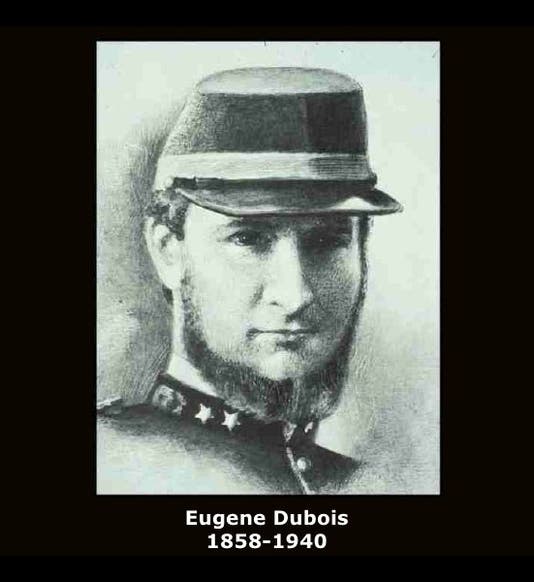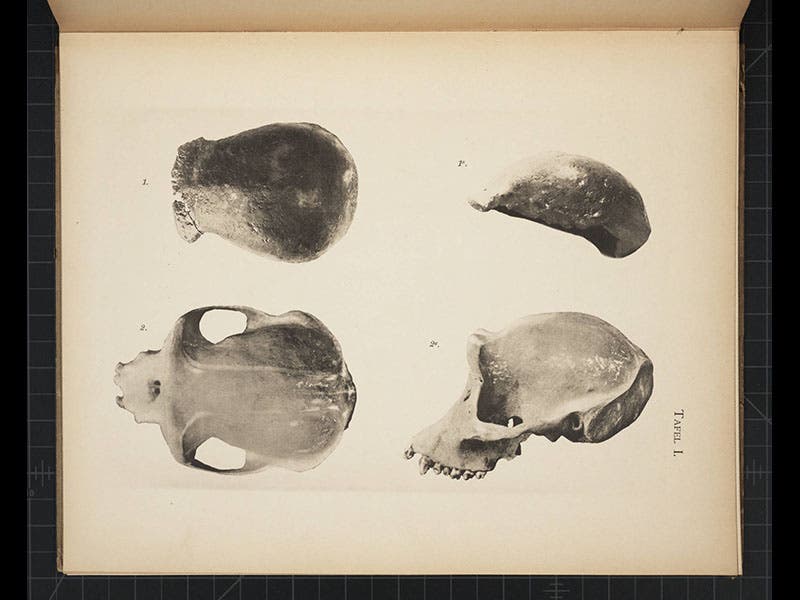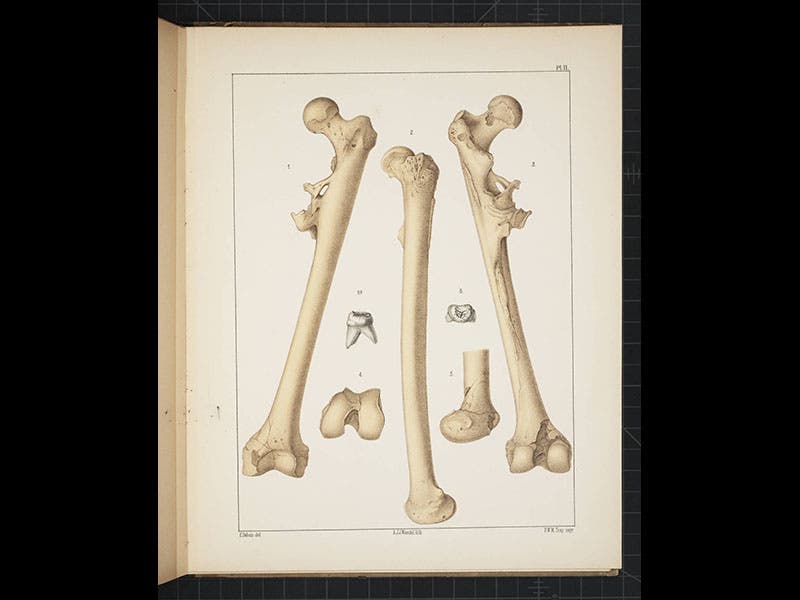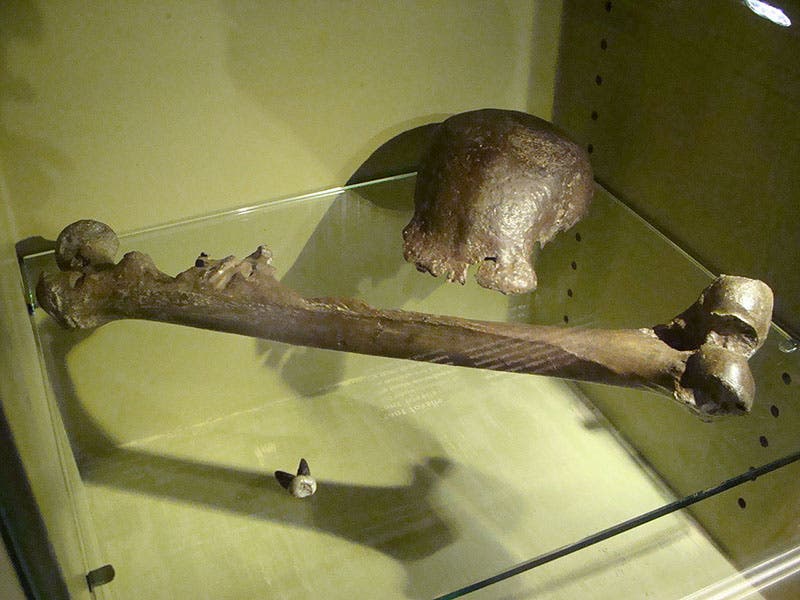Scientist of the Day - Eugène Dubois
Eugène Dubois, a Dutch physician and anatomist, died Dec. 16, 1940, at age 82. In the early 1880s, Dubois was exposed to the evolutionary ideas of the German Darwinian, Ernst Haeckel. Haeckel had proposed that humans and the great apes were descended from a common ancestor, for which he had coined the term "missing link," and Haeckel further suggested that the logical place to search for the remains of such missing links was in Java and Borneo, the home of the living gibbon and orangutan. Dubois was taken with the idea of searching for human ancestors, and so to get to Indonesia, he enlisted in the Dutch Army, which had a presence in the Dutch East Indies. He was sent to Sumatra in 1887, where he began his search, but it was not until he was transferred to Java that he found success.
In 1891, at a site named Trinil in central Java, Dubois found a human tooth, a human-like femur, and a human-like skullcap. The femur was smaller than, but otherwise not that different from, a modern human's, but the skullcap was flat and shallow, with a much smaller cranial capacity than a modern human skull. Dubois called it "Pithecanthropus", after the name proposed by Haeckel for his hypothetical ancestor, and added the specific name "erectus." Being quite a mouthful, Pithecanthropus erectus quickly became "Java man" in the popular press. We now recognize Java man as the first discovered specimen of Homo erectus. Current thinking is that Homo erectus, although a very successful and wide-spread species, was not ancestral to Homo sapiens. We have Dubois’s book of 1894, Pithecanthropus Erectus, in the History of Science Collection, and we displayed it in our 2012 exhibition, Blade and Bone: The Discovery of Human Antiquity, along with a plate from a Smithsonian Institution Report of 1898 that announced the discovery to a U.S. audience.
The illustrations above show, in order: the young Army physician Dubois; the Java man skull compared to a gorilla skull, from Dubois’s 1894 book; three views of the Java man femur and the tooth, also from 1894; and a modern photo of the three Pithecanthropus fragments, as displayed in the Naturalis Museum in Leiden.
Dr. William B. Ashworth, Jr., Consultant for the History of Science, Linda Hall Library and Associate Professor, Department of History, University of Missouri-Kansas City. Comments or corrections are welcome; please direct to ashworthw@umkc.edu.








![Using an astrolabe to measure the depth of a well, woodcut in Elucidatio fabricae vsusq[ue] astrolabii, by Johannes Stöffler, 1513 (Linda Hall Library)](https://assets-us-01.kc-usercontent.com:443/9dd25524-761a-000d-d79f-86a5086d4774/a998eb50-55d2-4a88-ace2-a50aa5fa86e7/Stoffler%201.jpg?w=210&h=210&auto=format&fit=crop)

